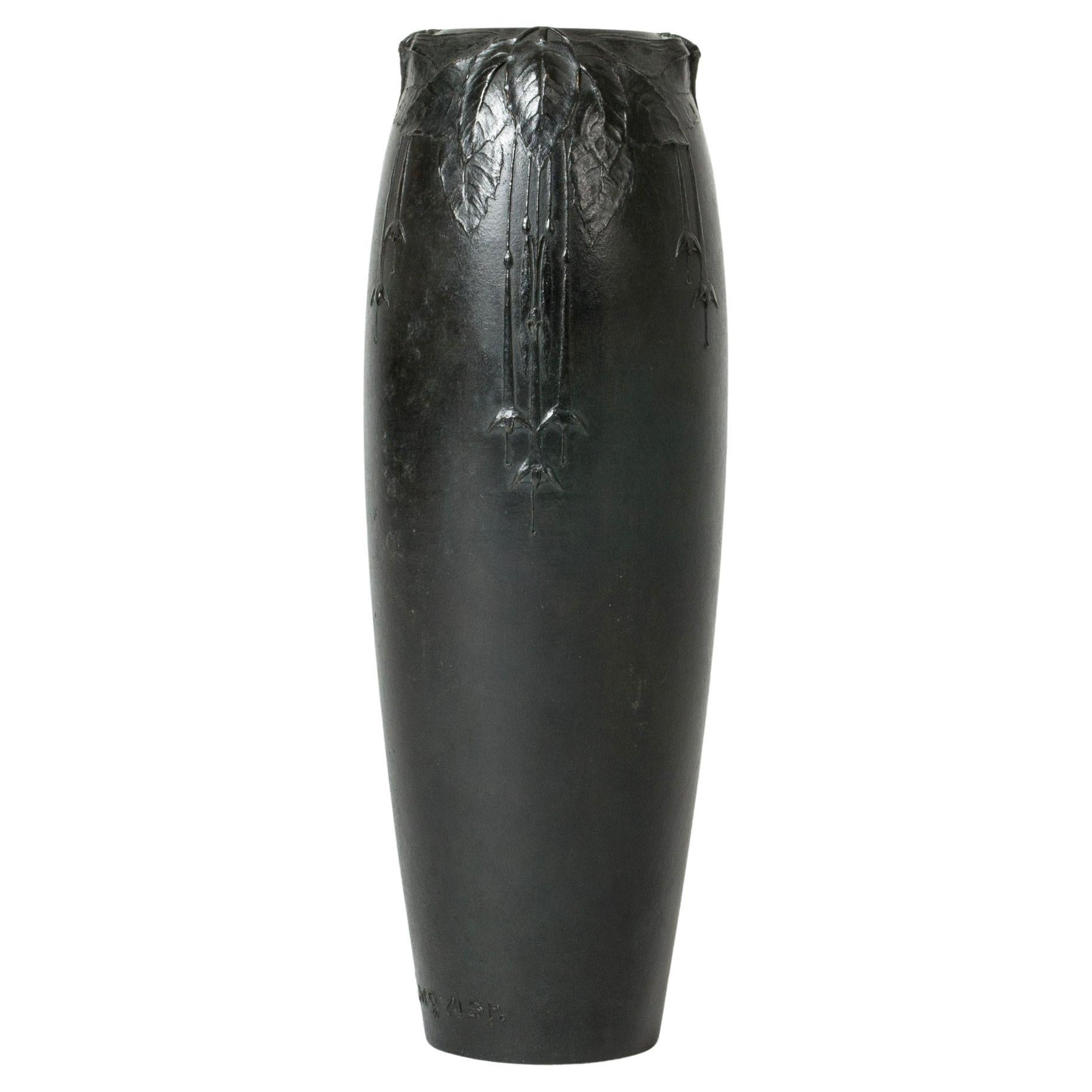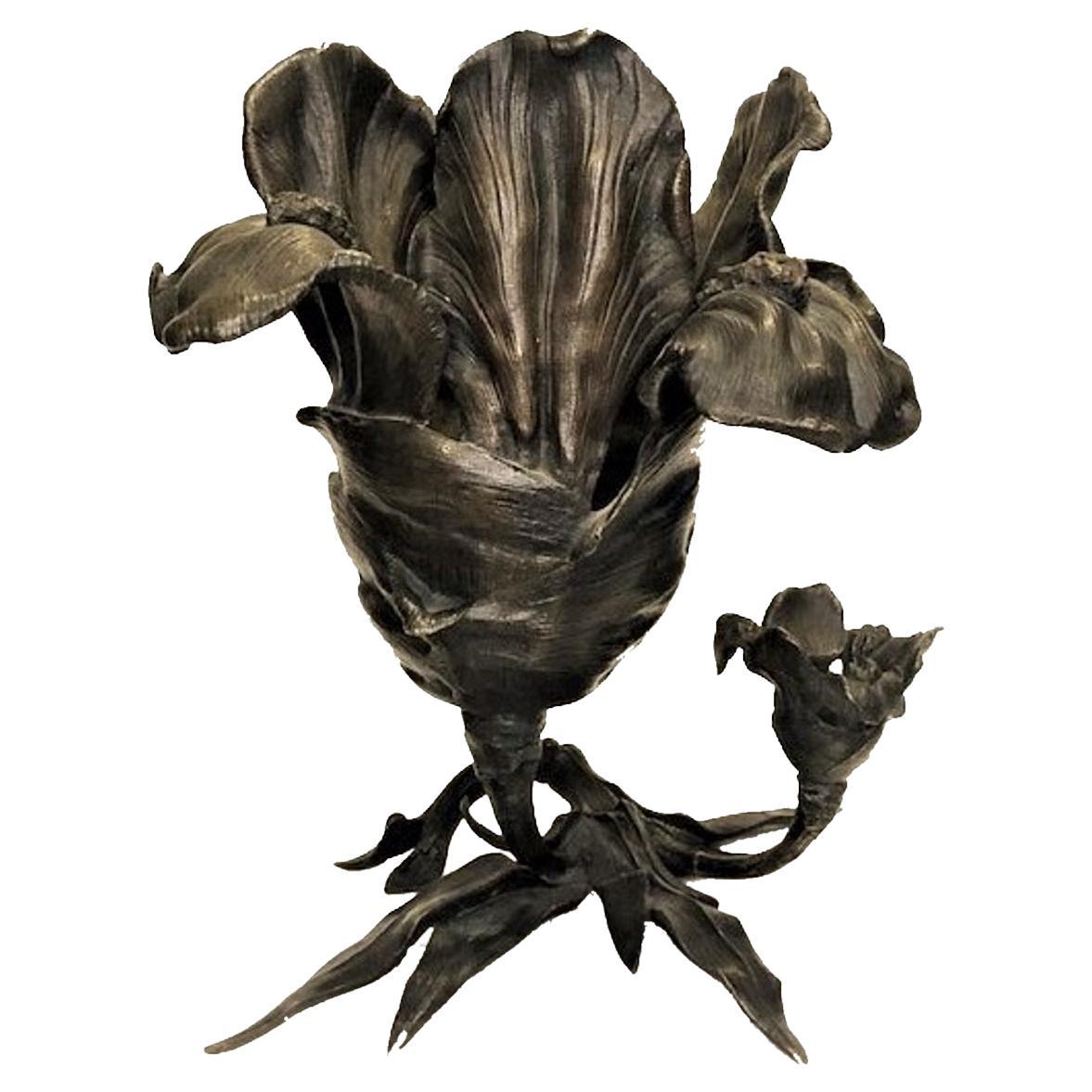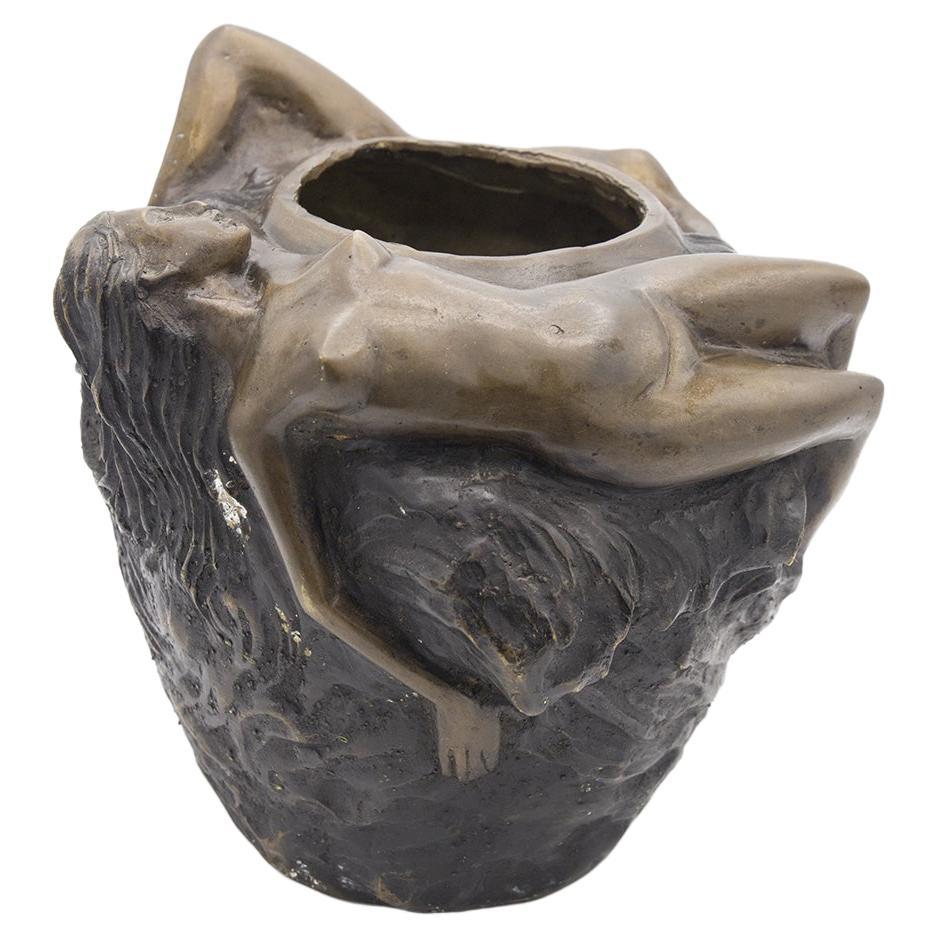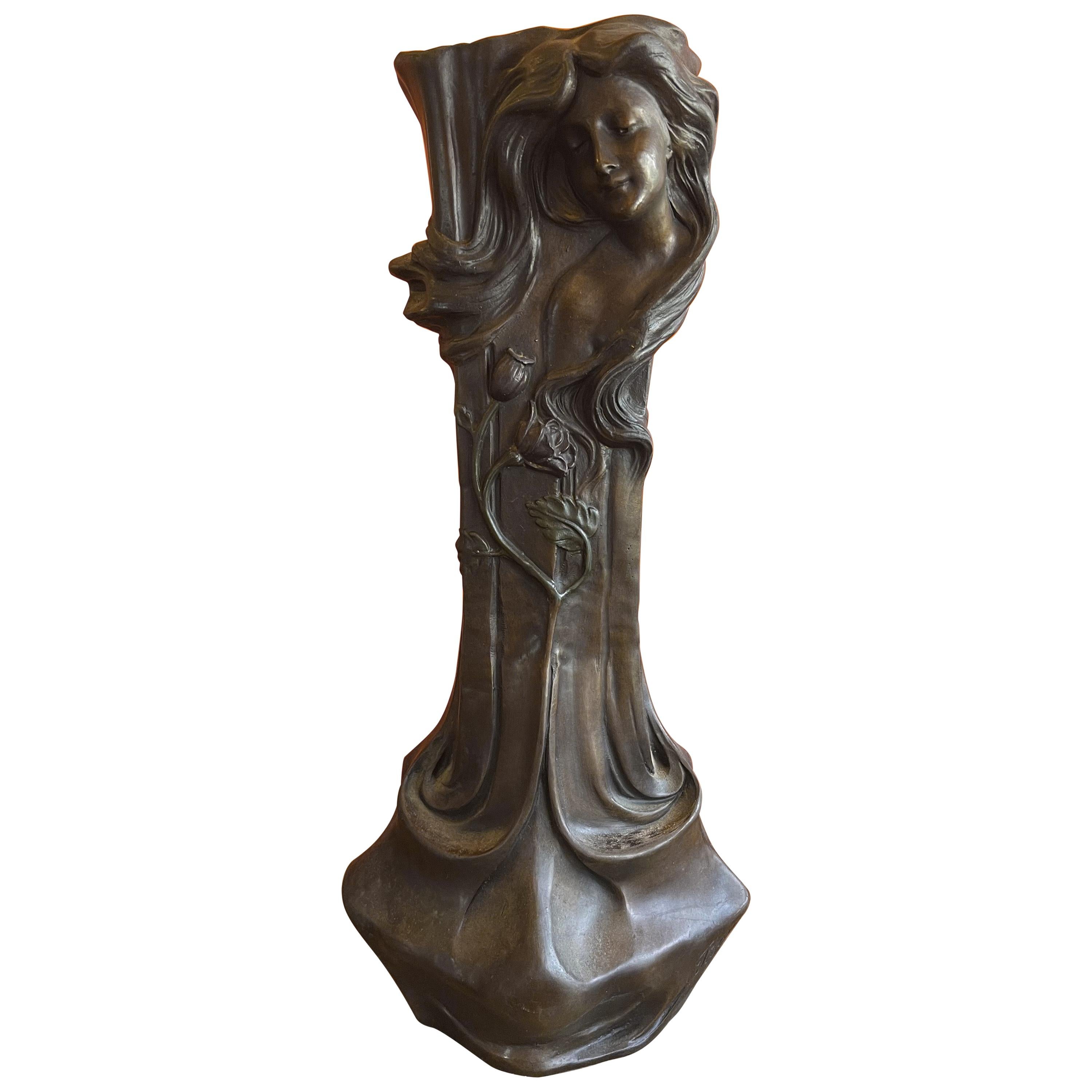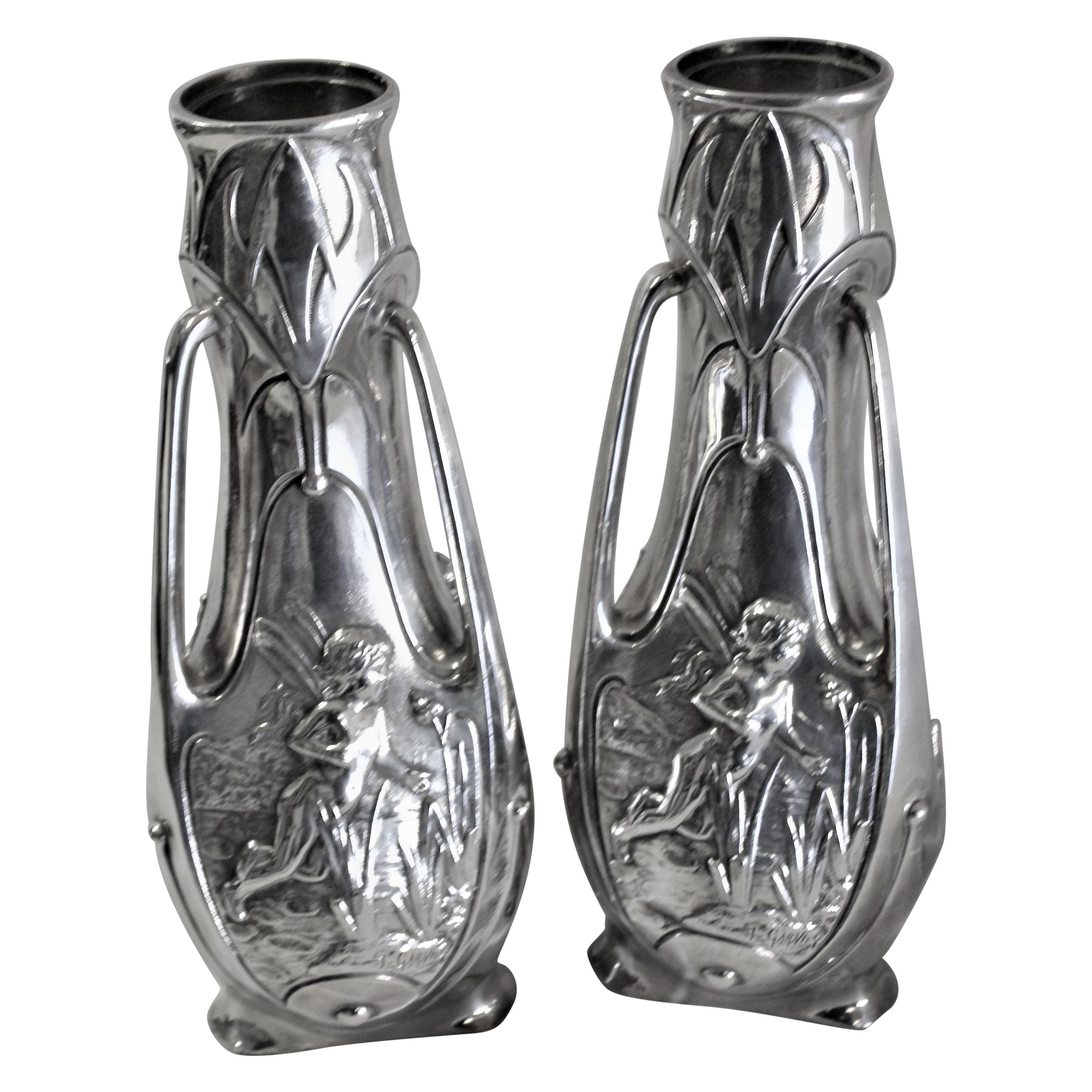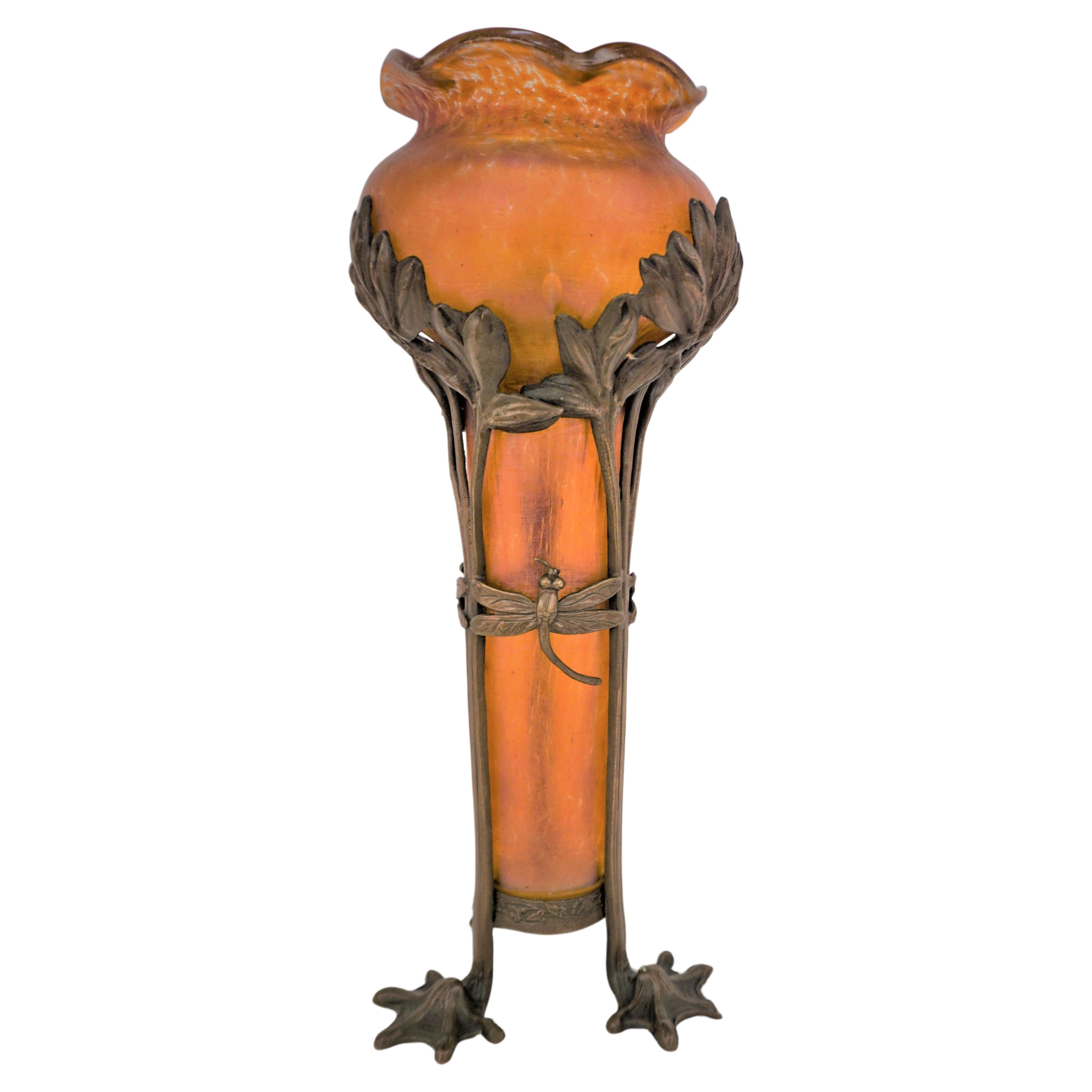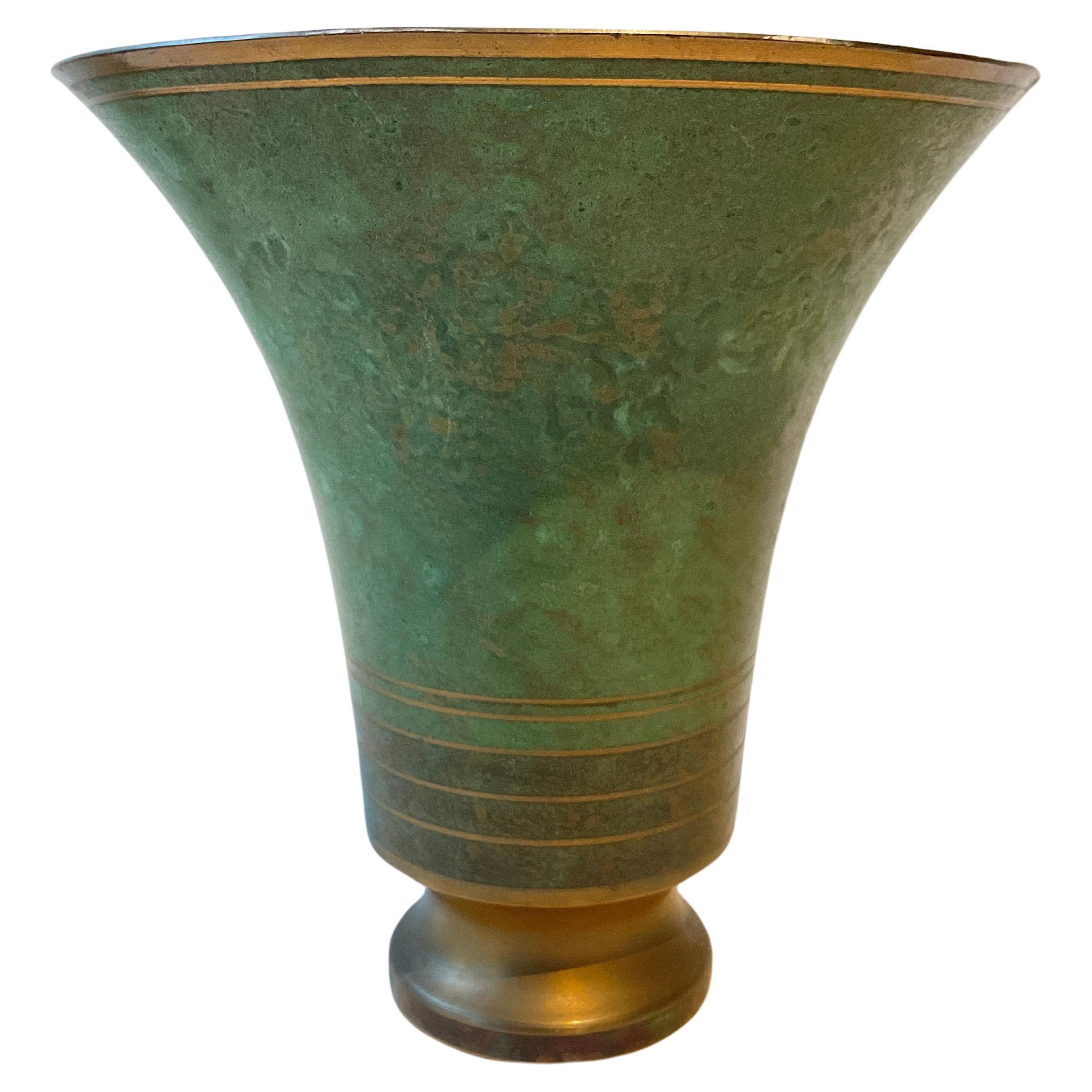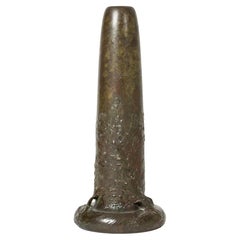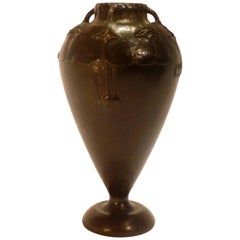
Hugo Elmqvist, an Art Nouveau Patinated Bronze Vase, Signed
View Similar Items
1 of 6
Hugo Elmqvist, an Art Nouveau Patinated Bronze Vase, Signed
About the Item
- Creator:Hugo Elmqvist (Sculptor)
- Dimensions:Height: 6.5 in (16.5 cm)Diameter: 3.94 in (10 cm)
- Style:Art Nouveau (Of the Period)
- Materials and Techniques:Bronze,Patinated
- Place of Origin:
- Period:
- Date of Manufacture:circa 1900
- Condition:
- Seller Location:Monte Carlo, MC
- Reference Number:Seller: 55751stDibs: LU145028185033
You May Also Like
- Art Noveau Bronze vase by Hugo Elmqvist, Sweden, ca 1900Located in Stockholm, SEBeautiful Art Noveau vase in patinated bronze, designed by Hugo Elmqvist. Stately form with a heavy base, decorated with a dynamic relief of seaweed and crabs.Category
Antique Early 1900s Swedish Scandinavian Modern Vases
MaterialsBronze
- Art Noveau Bronze vase by Hugo Elmqvist, Sweden, ca 1900Located in Stockholm, SEBeautiful Art Noveau vase in black patinated bronze, designed by Hugo Elmqvist. Elegant clean form with relief decor of leaves, flowers and dragonflies around the mouth.Category
Antique Early 1900s Swedish Scandinavian Modern Vases
MaterialsBronze
- Vase Designed by Hugo Elmqvist, Sweden, circa 1900Located in Stockholm, SEVase designed by Hugo Elmqvist, Sweden, circa 1900. Bronze. Measure: H 39 cm/ 15 1/4". Carl Hugo Magnus Elmqvist was a certified and well-known sculpt...Category
Antique Early 1900s European Jugendstil Vases
MaterialsBronze
- Art Nouveau Bronze Vase Signed "Mansch Paris"By Ignaz ManschLocated in Belmont, MAImpressive bronze vase with three-dimensional mermaid decoration, signed by Ignaz Mansch (Austrian 1867-1925). The vase will be directly shipped from Germany. The shipping costs to B...Category
Antique Early 1900s French Art Nouveau Vases
MaterialsBronze
- Japanese Art Nouveau Meiji Period Patinated Bronze Vase, circa 1900Located in New York, NYAlthough unmarked, this rare and important, grand but at the same exquisite patinated bronze vase has just a very few little details, defying the shape of the handles, as well as the...Category
Antique Early 1900s Japanese Art Nouveau Vases
MaterialsBronze
- French Art Nouveau Patinated Bronze Sculptural Iris Vase, ca. 1900Located in New York, NYABOUT IRIS The iris is a special and mysterious flower. Not only because of its striking appearance, but also from an artistic and historical point of view. It is also like a work of art, as though created by Mother Nature. The unique leaves of this plant not only create wonderful shadow casts, but also look as if they were painted by hand. It's no wonder that iris acts as the muse for countless artists, and can be seen in many famous works of art. The iris was first spotted in the time of Pharaoh Thutmose, in 1504 BC. He had the iris inscribed into the wall reliefs of a temple as a sign of his power, as well as decorating his sceptre with motifs of the flower. Since then, the iris has been a symbol of victory in Egypt. But the symbolism of the iris goes further than that. In Japan, the flower represents courage and is the symbol of the boys' festival. In Islamic cultures, the iris is a symbol of prosperity. In Europe, the flower was a popular weapon symbol in the Middle Ages and stood for chivalry. And in Christianity, the iris was seen as a symbol of the trinity because of its three-part flowers. With more than 300 varieties, the iris is now the most popular flower among growers and gardeners following the rose. Countless artists use the iris in their works and the flower is present in all eras. You can see the flower on furniture, vases, jewelry, fabrics, sculptures, coats of arms and much more. Did you know that the iris is also called the sword lily? It's not a coincidence that it used to symbolize physical and emotional pain and suffering caused by a weapon. We also see the flower in religious art, where it's often associated with Mary and Jesus. The iris is also associated with the Greek goddess Iris, where the flower symbolizes reconciliation and divine messages. This is also reflected in many paintings. Finally, the iris is also visible in Dutch and Flemish still-life paintings. This can be in a religious form, incorporated into an object or as a decorative flower. In the Art Nouveau art movement, the iris (along with other plants, such as the birch) was often used as an expression of feminine beauty. With its almost otherworldly appearance, the iris is perfectly suited to the Art Nouveau aesthetic and is featured in many well-known works of art. The poet of that era, Hermann Hesse...Category
Antique Early 1900s French Art Nouveau Planters, Cachepots and Jardinières
MaterialsBronze
Recently Viewed
View AllMore Ways To Browse
Mccoy Vintage Pottery
Porcelaine De Paris Birds
Talavera Tiles
Vintage Waterford Crystal Vase Waterford
Vintage Waterford Crystal Vase
Antique Mini Vases
Czech Vase Grille
Glass Murano Bag
Noritake Deco
Olsen Royal Copenhagen Crackle Glaze
Pallme Konig
Riihimaki Riihimaen
Sakura Glass Vase
Scheurich 284
Tiffany Stained Glass Vase
Upsala Ekeby On Sale
Art Deco Vase Dunand
Baccarat Harcourt Vase

